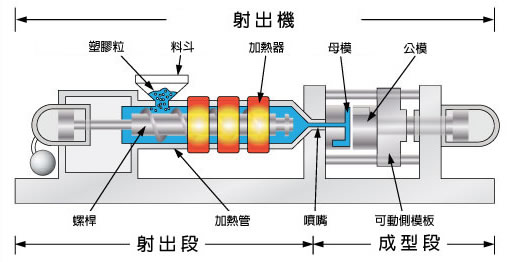Plastic Injection Molding (injection moulding)Injection moulding (UK spelling), or Injection molding (U.S. spelling) is a manufacturing process for producing parts by injecting molten material into a mould, or mold. Injection moulding can be performed with a host of materials mainly including metals (for which the process is called die-casting), glasses, elastomers, confections, and most commonly thermoplastic and thermosetting polymers. Material for the part is fed into a heated barrel, mixed (using a helical shaped screw), and injected into a mould cavity, where it cools and hardens to the configuration of the cavity.[1]:240 After a product is designed, usually by an industrial designer or an engineer, moulds are made by a mould-maker (or toolmaker) from metal, usually either steel or aluminium, and precision-machined to form the features of the desired part. Injection moulding is widely used for manufacturing a variety of parts, from the smallest components to entire body panels of cars. Advances in 3D printing technology, using photopolymers that do not melt during the injection moulding of some lower temperature thermoplastics, can be used for some simple injection moulds.
Parts to be injection moulded must be very carefully designed to facilitate the moulding process; the material used for the part, the desired shape and features of the part, the material of the mould, and the properties of the moulding machine must all be taken into account. The versatility of injection moulding is facilitated by this breadth of design considerations and possibilities.
Process
Provide drawings / samples / demands ▸ Estimate ▸ Confirmation items ▸ Material preparation / scheduling ▸ Mold manufacturing ▸ Inspection / modification / trial mold ▸ Mold completion ▸injection molding /Buried injection molding ▸ Shipment

Customer provides: basic data required for evaluation of plastic parts


